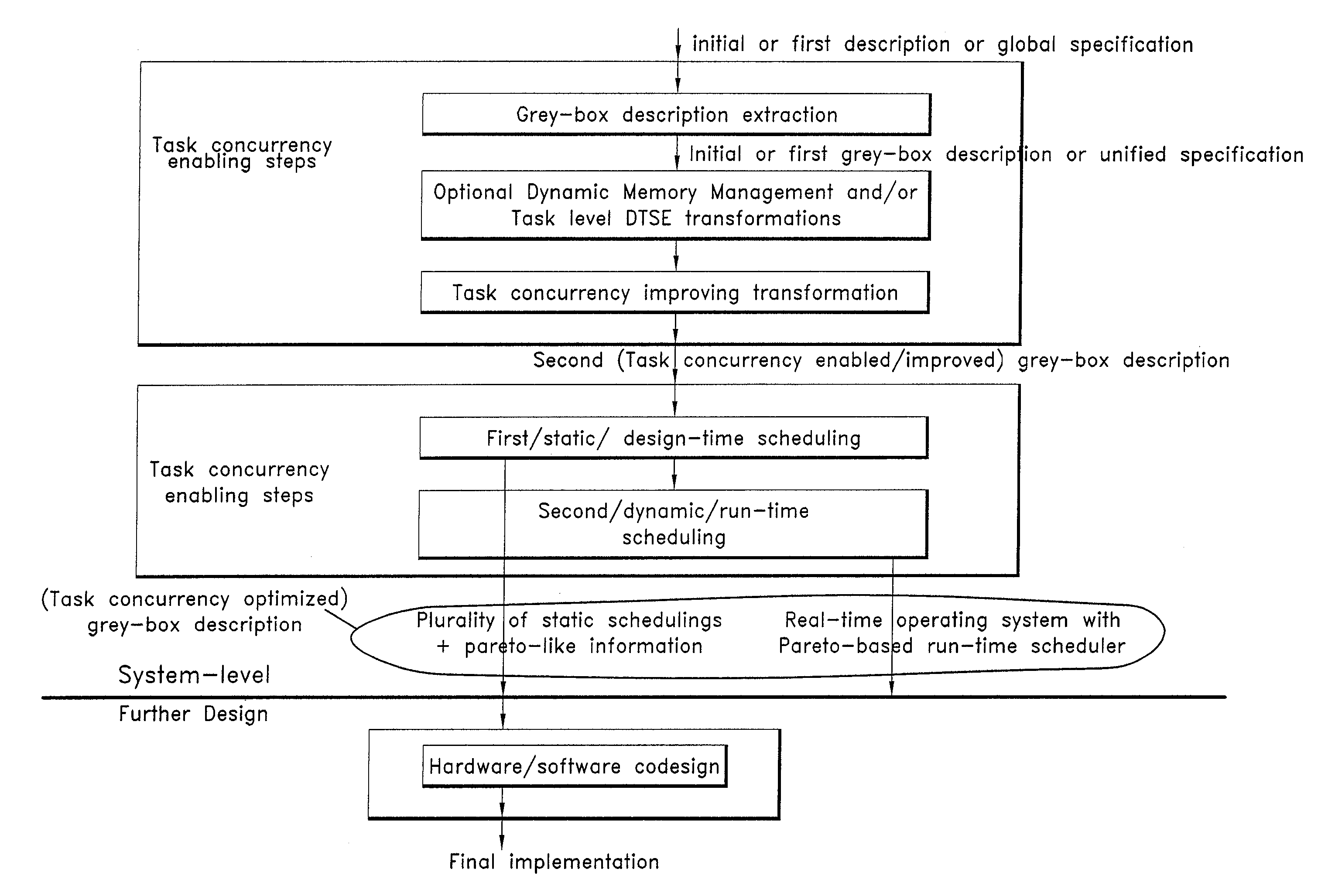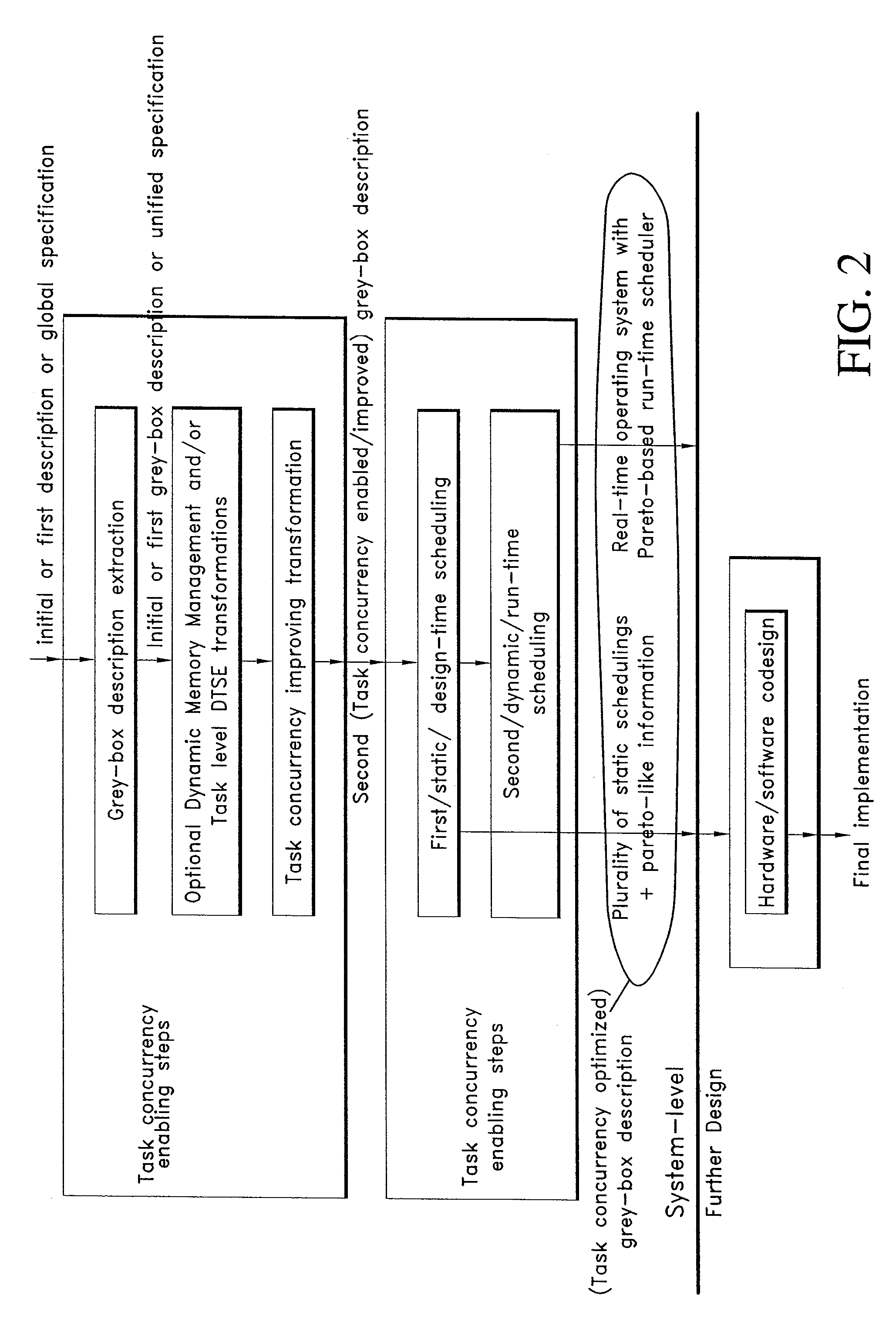Task concurrency management design method
- Summary
- Abstract
- Description
- Claims
- Application Information
AI Technical Summary
Benefits of technology
Problems solved by technology
Method used
Image
Examples
case 1
[0242]
[0243]Conditions:
[0244]1. TB=1 symbol period;
[0245]2. VLOW=1V, VHIGH=3V;
[0246]3. The two timers and SW threads are scheduled independently.
[0247]The Eq. CS,i in Tab. 5 is the equivalent execution time on the 10 MHz processor.
[0248]The optimal schedule result derived from the ILP solver is shown in Tab. 6. It is interesting to notice that though task 4 and task 12 have the same execution time, the scheduling result and energy consumed are quite different because of their different deadlines. For a stricter deadline, more part of the thread frame will be executed on the higher voltage processor and that means more power. Task 7 and task 14 also have the same execution time but different scheduling.
case 2
[0249]
[0250]Conditions:
[0251]1. TB=1 symbol period;
[0252]2. VLOW=1V, VHIGH=3V;
[0253]3. The two timers are grouped together.
[0254]The difference between case 1 and case 2 can be seen in FIG. 36, where the shadowed areas represent the processor time occupied by the DSTU thread nodes. In case 2, the two timers are integrated in one group and scheduled as a unit. Though there is idle time in that group, it is not available to the processes outside that group. The optimal schedule result derived from the ILP solver is shown in Tab. 8.
case 3
[0255]
[0256]Conditions:
[0257]1. TB=2 symbol periods;
[0258]2. VLOW=1V, VHIGH=3V;
[0259]3. The two timers are grouped together for two symbols.
[0260]All possible schedules of the timers in two symbol periods that make a reasonable distinction can be found in FIG. 37. The optimal schedule result derived from the ILP solver is shown in Tab. 10.
PUM
 Login to View More
Login to View More Abstract
Description
Claims
Application Information
 Login to View More
Login to View More - R&D
- Intellectual Property
- Life Sciences
- Materials
- Tech Scout
- Unparalleled Data Quality
- Higher Quality Content
- 60% Fewer Hallucinations
Browse by: Latest US Patents, China's latest patents, Technical Efficacy Thesaurus, Application Domain, Technology Topic, Popular Technical Reports.
© 2025 PatSnap. All rights reserved.Legal|Privacy policy|Modern Slavery Act Transparency Statement|Sitemap|About US| Contact US: help@patsnap.com



